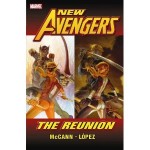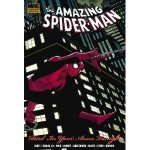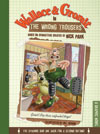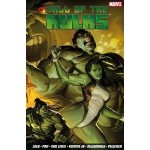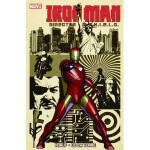


By Mario Kaneda, translated & adapted by Asuka Yoshizu & Steve Bunche (TokyoPop)
ISBNs: 978-1-59816-040-6, 978-1-59816-041-3 & 978-1-59816-042-0
Here’s another large slice of manga magic that took the world by storm when it inevitably transferred to the anime screen, and another of those uncomfortably inappropriate teen-sex comedies that so delight the Japanese and generally bewilder we less socially ossified westerners. Aimed at older teens this type of tale fully acknowledges and draws seemingly endless amusement from the fact that boys and girls of a certain age are hormone-crazed muskrats desperate to catch furtive snatches of each other’s proscribed bits and only conscience and social pressure keeps them from being even more intolerable than they are.
If only it got any easier with advanced age…
These tales first appeared in the Japanese magazine ShÅnen Ace from 2000 to 2005 and were eventually collected in ten volumes of frantic, frenetic slapstick, excruciating comedy-of-manners gaffes, gusset glimpses, shower-scenes, fantasy fun and burgeoning young love.
‘GÄrusu BurabÅ’ is the story of a hapless high school student named Yukinari Sasaki, a short, dim nebbish who is so put upon, teased and bullied by girls – and even his female teachers – that he has developed a condition which brings him out in hives every time anything with no Y chromosomes touches him. His condition is further compounded by the fact that the neighbours’ daughter Kirie, a girl he has known since childhood, and a girl he can at least talk to, has recently changed.
Her shy and awkward nature has developed into a crush he is oblivious to, but unfortunately said crush has devolved into a series of violent assaults every time she gets flustered, and with Sasaki, she gets flustered a lot… At some time when nobody was paying attention she blossomed into an astonishingly well-endowed young woman – something else that embarrasses her greatly and often leads to red-faced punches and kicks…
After a particularly trying day Yukinari returns home and stumbles into Kirie using his shower. He’s flustered, she’s naked and while he’s being pummelled by the blushing, panicked girl he falls into the bath… and emerges into another world and another naked girl’s bath…
But this is a completely different kind of girl. She is genuinely concerned, solicitous, even shorter than him and most importantly not screaming or hitting. Moreover Miharu can touch him without setting off his allergic reaction. All she cares about is his welfare and what earth food is like.
The world of Siren is a revelation; a magical place where women outnumber men 9-1. When her older sister Maharu spots the unattached male she makes a violent play for Yukinari, chasing him into the streets where every female in range tries to capture the fleeing boy-toy.
Miharu rescues him and they double back to her bathroom, but the pursuers are too close and the fugitives fall into the bath – and arrive back in Yukinari’s shower, still occupied by the perplexed, naked and fuming Kirie.
Miharu is apparently stuck on Earth: the perfect companion for the gynophobic lad. She never attacks him, doesn’t cause hives, has magic powers and only cares about food. Unfortunately she’s as naive as a newborn hamster and bewitchingly beautiful, so the hoi-polloi at school trail after her like dogs after biscuits, especially wealthy school stud Fukuyama, a glorious young god of manliness who hides a secret of his own: he is so male-phobic that he has an attack of hives every time a male touches him. He is driven crazy by Miharu’s indifference to him…
Meanwhile hopeless Yukinari is still being teased and bullied by all girls and regularly happening into situations where Kirie is undressed and volatile…
This first volume covers the set-up of the formulae, with lots of stories about simplistic Miharu’s desire to eat anything not nailed down, platonically care for Yukinari and tendency to be duped into wearing revealing or fetishistic clothing by the lecherous Fukuyama. Despite being always hungry and able to consume practically anything Miharu is a brilliant cook, unlike Kirie whose recipes are only really appreciated by terrorists looking for new bio-weapons. Yukinari increasingly has to spend his time protecting the gullible alien’s non-existent modesty…
Gradually the series takes a more supernatural turn as the unhappy ménage-a-trouble encounter an undressed ghost girl and Fukuyama’s sister Risa: a young sorceress convinced that beleaguered Yukinari is her predestined husband and willing to use all her wiles and witchcraft to make him hers – if it means destroying or even befriending Miharu and Kirie…
The first volume ends with a light-hearted and hottie-filled adaptation of traditional Japanese folk-tale Momotaro (the Peach Boy).
Volume 2 continues Risa’s campaign. She casts spells on Yukinari, tries to convince Miharu that her attentions are preventing the diminutive lad from forming normal relationships or shaking his allergic phobia and things get completely crazy when the Siren girl drinks alcohol and begins to replicate herself uncontrollably…
Yukinari still keeps getting accidental, unwelcome and concomitantly painful glimpses of girls whilst growing increasingly fond of Miharu, even battling the hulking alpha male Fukuyama to protect her, but when amnesiac Koyomi appears thing get very strange indeed. For one thing she is the only other girl able to resist the school stud’s dubious charms, she doesn’t give Yukinari hives and when flustered or scared giant pits open in the floor under her…She is in fact an agent from Siren sent to recover the missing Miharu, and when her memory returns she transports her quarry home before Yukinari’s tear-filled eyes…
Of course she does return, and this second volume concludes with another side story; a day in the life of sexy super-stud Fukuyama – or at least in his fevered, fetid mind…
Volume 3 opens with the cast being coerced by the ghastly Lothario into a game of strip Mah-Jong where the returned Konomi (on a secret mission for Miharu’s sister) is Fukuyama’s latest lewd target. Sadly for him she suffers from the same condition as he does – she too is androphobic and repelled by the touch of men…
Konomi’s mission is revealed and she begins searching for a perfect husband for Miharu’s strident, overbearing sister; inevitably leading to some very uncomfortable situations, as do the girls’ communal attempts to earn some extra money, before everything goes really crazy when Kirie falls through Risa’s mirror into a world where all her friends have reversed personalities…
Sweet-natured Miharu’s attempts to buy all her friends New Year’s Gifts goes painfully awry before all ends well, and her celebration of the Setsubun festival (where bad luck is symbolically removed by throwing Soya beans out of the house) also falls flat – but only because Risa summoned real evil spirits to the party… The volume ends on a heartbreakingly beguiling tale of a little girl abandoned in the snow – a story so moving it’s worth buying all three volumes just to read this sparkling gem in perfect context…
Irrepressibly juvenile but great fun and beautifully drawn, this is a series as likely to titillate as offend, but it’s all good clean smut really, harmless and charming and bound to delight girl watchers and anyone enduring puberty or recalling it with any degree of honesty…
© 2001, 2002 Mario Kaneda. English text © 2005, 2006 Tokyopop Inc. All rights reserved.
